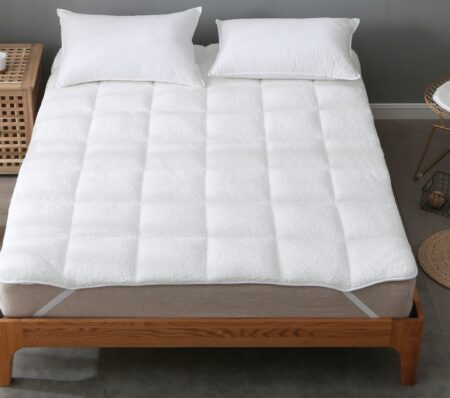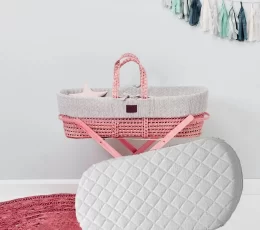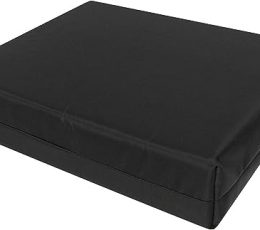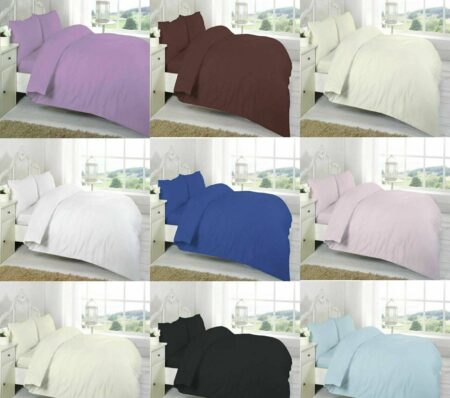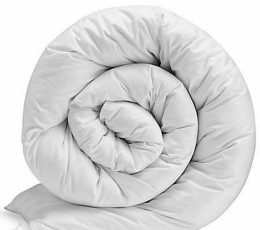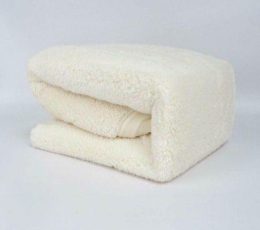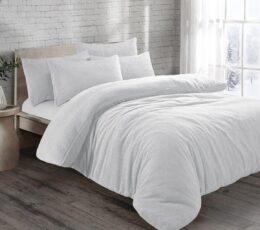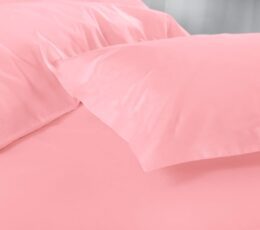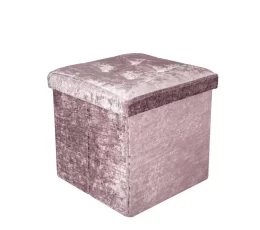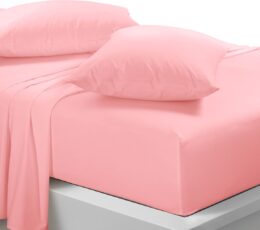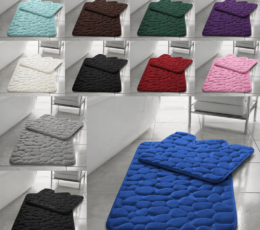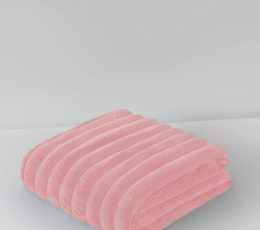A great pillow can work wonders for you. It should provide comfort and support for your head and upper body, while keeping your spine in proper alignment. Using the wrong pillow can lead to back issues and hinder your body’s healing process during sleep.
While many people remember to clean their bedsheets and duvet covers regularly, it’s easy to forget that hotel quality pillows should also be replaced periodically. Let’s be honest, no one wants to spend a decade sleeping on an old, lumpy pillow every night! So, how frequently should you change your pillows? We’ll cover all the essential information in this article.

How Often Should You Change Your Pillow?
Pillows are often overlooked when considering our sleep environment, yet they are crucial in ensuring a comfortable and restful night’s sleep. However, like many other household items, pillows have a finite lifespan and must be replaced periodically. Determining how often you should change your pillow depends on several factors, including the type of pillow, your sleeping habits, and any health considerations which you can understand in depth at pillow guide.
One common guideline sleep experts recommend is replacing your pillow every 1 to 2 years. Over time, pillows accumulate dust, dead skin cells, sweat, oils, and other debris, creating an environment ripe for allergens, dust mites, and bacteria. These contaminants can exacerbate allergies, trigger respiratory issues, and even lead to skin problems. Therefore, regular pillow replacement is essential for maintaining a healthy sleep environment and ensuring optimal comfort and support.
The frequency with which you should change your pillow may vary based on the type of pillow you use. Synthetic pillows, for example, tend to flatten faster and collect more allergens than down or memory foam pillows. As a result, synthetic pillows may need to be replaced every 6 months to 2 years, while down and memory foam pillows can last longer, typically around 2 to 3 years or more. Make sure to determine which is the best thickness of pillow for your sleep.
Your sleeping habits can also influence how often you should change your pillow. Side and stomach sleepers, who put more pressure on their pillows, may find that their pillows wear out more quickly than back sleepers. Additionally, suppose you have allergies, asthma, or other respiratory issues. In that case, you may need to replace your pillow more frequently, perhaps every 6 months to 1 year, to minimize exposure to allergens and irritants.
Importance of Replace Pillows
Don’t underestimate the importance of replacing your comfort pillow regularly. While it may seem like a hassle, using old pillows can lead to many problems. Allergens like dust mites, mold, and pet dander can accumulate in your pillow, causing allergic reactions and disrupting sleep. Investing in antimicrobial and breathable pillows or replacing them frequently can prevent these pillow-related allergies and enjoy a better night’s sleep.
But it’s not just allergens that you need to worry about. Your pillows can also become a breeding ground for dirt, sweat, and oils from your face and hair. These substances can seep through your pillowcases and cause unsightly yellow stains. Worse yet, they can clog your pores and trigger acne breakouts or rashes, especially if you have sensitive skin. Regularly washing your pillowcases and pillows with a gentle detergent can help alleviate this buildup, but eventually, it’s best to start fresh with new pillows that won’t irritate your skin.
Lastly, let’s not forget the main purpose of pillows: to support your neck and head while you sleep. Over time, pillows can sag or flatten, losing their ability to provide support. This can lead to muscle tension, soreness, and an unrefreshed feeling when you wake up. Side sleepers may even experience shoulder pain from using a flattened pillow. Fluffing or folding your old pillow can only do so much. If it no longer offers the support it once did, it’s time to replace it. Your body will thank you for it. Make sure to choice wisely between thick pillow or thin pillow.

Pillow Care and Replacement Guidelines:
The Pillow care are one of the most crucial which we can consider for improving the lifespan of the pillow. This pillow care tips are mainly essential to give your pillow the long life which they deserved.
- Regular Cleaning: Wash pillowcases and pillow protectors regularly to remove sweat, oils, and other debris. Most pillows are machine washable but follow the manufacturer’s instructions. Use a gentle cycle and mild detergent to avoid damaging the pillow materials.
- Dry Thoroughly: Proper drying is crucial to prevent mold and mildew growth. Tumble dry pillows on a low heat setting or air dry them outdoors, ensuring they are completely dry before use.
- Use Pillow Protectors: Pillow protectors act as a barrier against sweat, oils, allergens, and stains, helping to keep your pillows clean and prolong their lifespan. Wash pillow protectors regularly along with your bedding.
- Replace When Necessary: Look for signs of wear and tear, such as lumps, flattened areas, or an unpleasant odor. If your pillow no longer provides adequate support or comfort, it’s time for a replacement.
- Consider Pillow Type: Different types of pillows have different lifespans. Synthetic pillows may need to be replaced more frequently, while down and memory foam pillows tend to last longer. Consider your sleeping preferences and any specific health concerns when selecting a pillow.
- Maintain Pillow Shape: Fluff and air out your pillows regularly to maintain their shape and freshness. This helps prevent moisture buildup and keeps your pillows feeling and smelling clean.
- Invest in High-Quality Pillows: While high-quality pillows may cost more upfront, they often last longer and provide better support and comfort. Consider investing in a pillow that suits your sleeping needs and preferences to ensure a good night’s sleep.
Signs Your Pillow Needs Replacing:
As the pillow are getting old and there are several other signs that can show us how that the bond between the pillow and the user is up untill now, so below are some of the signs we need to consider for changing the pillow.
- Lumps and Flattened Areas: One of the most obvious signs that your pillow needs replacing is if it has developed lumps or flattened areas. This loss of shape and support can lead to discomfort and inadequate spinal alignment, resulting in neck or back pain.
- Yellow Stains: Yellow stains on your pillow are often caused by sweat, oils, and other bodily fluids accumulated over time. These stains look unsightly and indicate a buildup of bacteria and allergens, making your pillow a breeding ground for potential health issues.
- Unpleasant Odor: If your pillow has a persistent unpleasant odor despite regular washing, it may be time to replace it. This odor could be due to the accumulation of sweat, oils, bacteria, and dust mites within the pillow fibers.
- Increased Allergy Symptoms: Old pillows can harbor allergens such as dust mites and mold, exacerbating allergy symptoms such as sneezing, congestion, and itching. If you notice an increase in allergy symptoms, your pillow could be the culprit.
- Discomfort During Sleep: If you toss and turn at night or wake up with a sore neck or back, it could be a sign that your pillow no longer provides adequate support and comfort. A worn-out pillow can disrupt your sleep quality and overall well-being.

How do you remove stains from pillows?
Generally people go with the pillows that are gives them best comfort and they use the same pillow without changing as they don’t want to get rid of the pillow which providing the best comfort. The Excessive use of anything makes it more rough and damaged the good for overusing. So, Here we are going to see how to remove the stains from the pillows.
- Pretreat the Stains: Before washing your pillow, it’s essential to pretreat any stains. You can do this by applying laundry detergent and water to the stained area and gently scrubbing it with a soft brush or cloth.
- Use a Mild Detergent: When washing your pillow, use a mild detergent suitable for delicate fabrics. Avoid harsh chemicals or bleach, which can damage the pillow fibers and cause discoloration.
- Wash in a Gentle Cycle: Most pillows are machine washable, but check the care label for specific instructions. Wash your pillow gently with warm water to help remove stains and dirt effectively.
- Dry Thoroughly: Proper drying is crucial to prevent mold and mildew growth. Tumble dry your pillow on a low heat setting or air dry it outdoors until completely dry. You can add tennis or dryer balls to the dryer to help fluff the pillow and distribute the filling evenly.
- Spot Clean: You can spot-clean your pillow using a mixture of mild detergent and water for smaller stains or areas that cannot be machine-washed. Apply the solution to the stained area and gently blot it with a clean cloth until the stain is removed.
- Use Pillow Protectors: To prevent stains and extend the lifespan of your pillows, consider using pillow protectors. These waterproof covers protect against sweat, oils, and other liquids, helping keep your pillows clean and fresh.
Where can I buy pillows?
When finding the perfect pillows for your sleep sanctuary, look no further than Bedding Royal. We pride ourselves on offering a wide selection of premium-quality pillows that cater to every sleep need and preference that gives you the best pillows to buy for 2024.

Hotel Quality Pillows:
Experience the luxury of hotel-quality pillows right in the comfort of your home with Bedding Royal’s exquisite collection. Our hotel-quality pillows are crafted using the finest materials and expert craftsmanship to provide unparalleled comfort and support night after night. Here, if we are also solving your issues about what pillows do 5 star hotels use to make there bedding that comfortable.
Whether you prefer the plushness of down and feather pillows or the contouring support of memory foam pillows, we have options to suit every sleep style. Indulge in the ultimate hotel experience with pillows that are designed to enhance your sleep and leave you feeling refreshed and rejuvenated each morning. We suggest to follow what pillows do hotels use to find the perfect pillow to sleep.
Maternity Pillows:
Pregnancy can be exciting yet challenging, especially when getting a good night’s sleep. That’s why Bedding Royal offers a range of maternity pillows designed specifically to provide expectant mothers with the support and comfort they need for a restful sleep. Our maternity pillows are carefully engineered to alleviate discomfort and promote proper spinal alignment during pregnancy, whether you’re sleeping on your side or your back.
With features such as adjustable fill and ergonomic shapes, our maternity pillows adapt to your changing body throughout each trimester, ensuring maximum comfort and support as your pregnancy progresses. Invest in your well-being and the health of your growing baby with maternity pillows from Bedding Royal. For every pillows make sure to invest in quality pillow as don’t know how long does cheap pillow last?
FAQs
How often should I change my pillow?
Generally, replacing your pillow every 1 to 2 years is recommended. However, this can vary depending on factors such as the type of pillow, your sleeping habits, and any health considerations.
What are the signs that indicate I need to replace my pillow?
Signs that it’s time to replace your pillow include lumps, flattened areas, yellow stains, an unpleasant odor, increased allergy symptoms, or discomfort during sleep.
Can I extend the lifespan of my pillow?
Yes, you can extend the lifespan of your pillow by practicing good pillow hygiene, using pillow protectors, washing your pillows regularly, and fluffing them to maintain their shape.
How do I know if I need to replace my pillow sooner?
If you have allergies, asthma, or respiratory issues, you may need to replace your pillow more frequently, every 6 months to 1 year. Additionally, if you experience neck or back pain, it might be time for a new pillow.
What type of pillow lasts the longest?
Down and feather pillows tend to last longer, around 2 to 3 years, while memory foam pillows can also have a longer lifespan, lasting 2 to 3 years or more, depending on the quality.
How does my sleeping position affect the lifespan of my pillow?
Side and stomach sleepers may need to replace their pillows more often, as these positions put more pressure on the pillow. Back sleepers may find that their pillows last longer.
Can I wash my pillow to prolong its lifespan?
Yes, most pillows are machine washable, but follow the manufacturer’s instructions. Use a gentle cycle and mild detergent, and ensure the pillow is thoroughly dried before use to prevent mold and mildew growth.
Are there any health risks associated with using an old pillow?
Old pillows can harbor allergens, bacteria, mold, and mildew, exacerbating allergies, asthma, and respiratory issues. They can also cause discomfort, neck pain, and poor sleep quality.
Should I invest in a high-quality pillow?
Investing in a high-quality pillow can be beneficial, as it may last longer and provide better support and comfort. Consider your sleeping preferences and any specific health concerns when selecting a pillow.
What can I do to maintain a clean and comfortable sleep environment?
In addition to replacing your pillow regularly, use pillow protectors, wash your bedding regularly, vacuum your mattress and pillows, and keep your bedroom well-ventilated to maintain a clean and comfortable sleep environment.
In conclusion, while it’s easy to overlook the condition of our pillows, regular replacement is essential for maintaining a healthy sleep environment and ensuring optimal comfort and support. By adhering to proper pillow care and replacement guidelines, you can extend the lifespan of your pillows and enjoy better sleep quality and overall well-being and make sure that know about how much to pay for decent pillows . So, assess the condition of your pillows today and make any necessary replacements to prioritize your sleep health.



